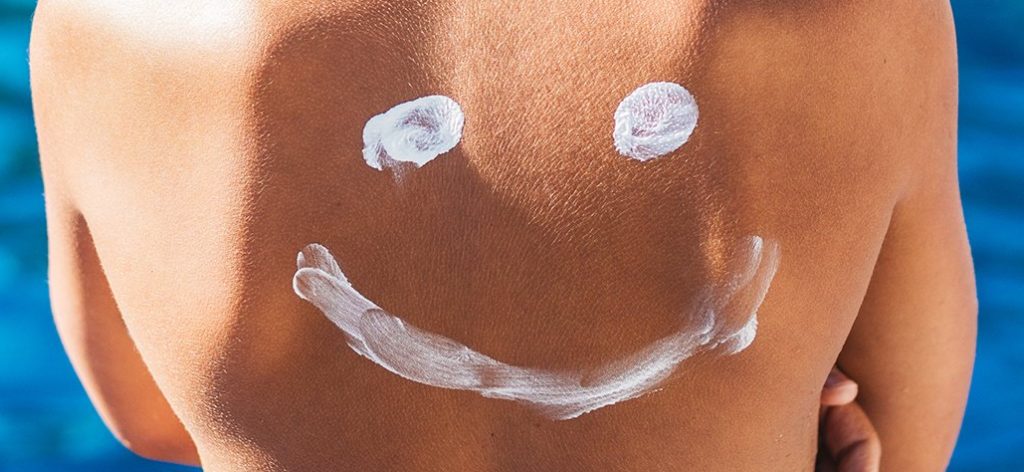Most people know that you have to wear some sort of sunscreen or block, especially during the hot summer months when the sun is baking and our skin is much more exposed. But, as anyone who has stood in front of the lotion aisles in the supermarket or pharmacy can attest, there are A LOT of products on the market. So, how do you choose the one that’s right for you?
First, let’s start with the basics and a little terminology, from the pros at Cornerstone’s Spa in Warrington.
UVA vs. UVB rays
The sun produces two kinds of rays that can damage our skin: Ultra Violet A rays (or UVA rays) and Ultra Violet B rays (or UVB rays).
UVA rays are constantly present regardless of the season or weather. They are so powerful that they can penetrate clothing and glass. Also, UVA rays are considered “aging rays” because they are able to penetrate much deeper into the surface of the skin, damaging the cells underneath causing wrinkles and leathery skin. While some may think their skin looks younger and even healthier when it’s tan, the reality is that each tan is creating irreversible skin damage.
 UVB rays are the rays are the rays that cause sunburn. Unlike UVA rays, these rays aren’t the same strength year-round. They are much stronger in the summer months (although on occasions, they can reflect off water or snow and cause a burn even in the winter). UVB rays are responsible for causing most skin cancers. While large doses of UVA rays can contribute to cancer, it’s the UVB rays that are commonly to blame.
UVB rays are the rays are the rays that cause sunburn. Unlike UVA rays, these rays aren’t the same strength year-round. They are much stronger in the summer months (although on occasions, they can reflect off water or snow and cause a burn even in the winter). UVB rays are responsible for causing most skin cancers. While large doses of UVA rays can contribute to cancer, it’s the UVB rays that are commonly to blame.
Sunscreens and sunblocks are typically labeled by SPF, or sun protection factor. SPF only measures protection against UVB rays. A higher SPF factor does not indicate superior protection from the sun; it only indicates that you may remain protected from the sun for a longer period of time. So, an SPF of 2 is just as protective as an SPF of 30, but for a much shorter period of time (meaning that you would have to reapply it more often).
Sunblock vs. sunscreen
 When it comes to protection against the sun, there are two types of products available: sunblocks and sunscreens.
When it comes to protection against the sun, there are two types of products available: sunblocks and sunscreens.
Sunblocks, also known as physical filters, sit on top of the skin and block UVA and UVB rays like a shield. They can be thicker, more opaque and a bit harder to spread and are typically comprised of titanium oxide or zine oxide as the active ingredient.
Sunscreens, also known as chemical filters, penetrate skin to scatter and absorb UV rays like a sponge. Sunscreens are lighter and less visible on the skin and are designed to protect against UVA, UVB, or both. They do allow some radiation through and need to be reapplied every few hours because their ingredients break down after exposure to sunlight.
There are also some broad spectrum products that combine the best features of both sunblock and sunscreen.
The bottom line
Both sunscreen and sunblock provide protection against the sun. If you are sensitive or allergic to certain ingredients, then that may guide your decision. If you aren’t, then it’s simply a matter of personal preference.
Regardless of what product you choose, make sure you apply it correctly. According to skincancer.org, you should:
- Us a broad spectrum (UVA/UVB) sunscreen with an SPF of 15 or higher every day. For extended outdoor activity, use a water-resistant, broad spectrum (UVA/UVB) sunscreen with an SPF of 30 or higher.
- Apply 1 ounce (2 tablespoons) of sunscreen to your entire body 30 minutes before going outside. Reapply every two hours, or immediately after swimming or excessive sweating.
Thanks Cornerstone Clubs and author Theresa Whitcomb.


